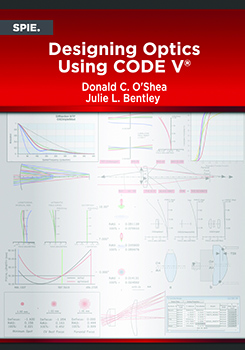|
In the previous chapter, we demonstrated the properties of spherical aberration and explored its behavior along the optical axis using transverse ray curves and spot diagrams. If spherical aberration were the only aberration in the lens, the performance would be the same across the entire field. However, at field points away from the axis, additional errors add to spherical aberration. In this chapter we examine the next two third-order transverse errors: coma (ρ2h) and astigmatism (ρyh2 and ρxh2). 7.1 Coma Restore the f/2.5 OSDsinglet (RES OSDsinglet) with an object at infinity and specify off-axis fields of 7° and 10° from the optical axis and located in the y-z plane. This is done with the command YAN 0 7 10 . For more complex lenses, these angles are fairly modest, but for a singlet they are large enough to demonstrate two off-axis errors, coma, and astigmatism. As is indicated in Table 6.1, coma, or comatic error, is quadratic in the ray height in the pupil and linear in ray height in the field h. The maximum coma occurs for rays from the largest field value h = 1 and at the edge of the pupil ρ = 1. To first examine the off-axis errors in the singlet, an off-axis fan of 15 rays from the 7° field (F2) is generated using the command VIE; RFR N; FAN F2 0 15; GO , as shown in Fig. 7.1. (The command RFR N turns off reference rays, so that only the fan of rays are displayed.) You can use the magnifier icon in the plot window to examine the focal region in more detail. For reference, we have thickened the 7° chief ray. |
|
|


